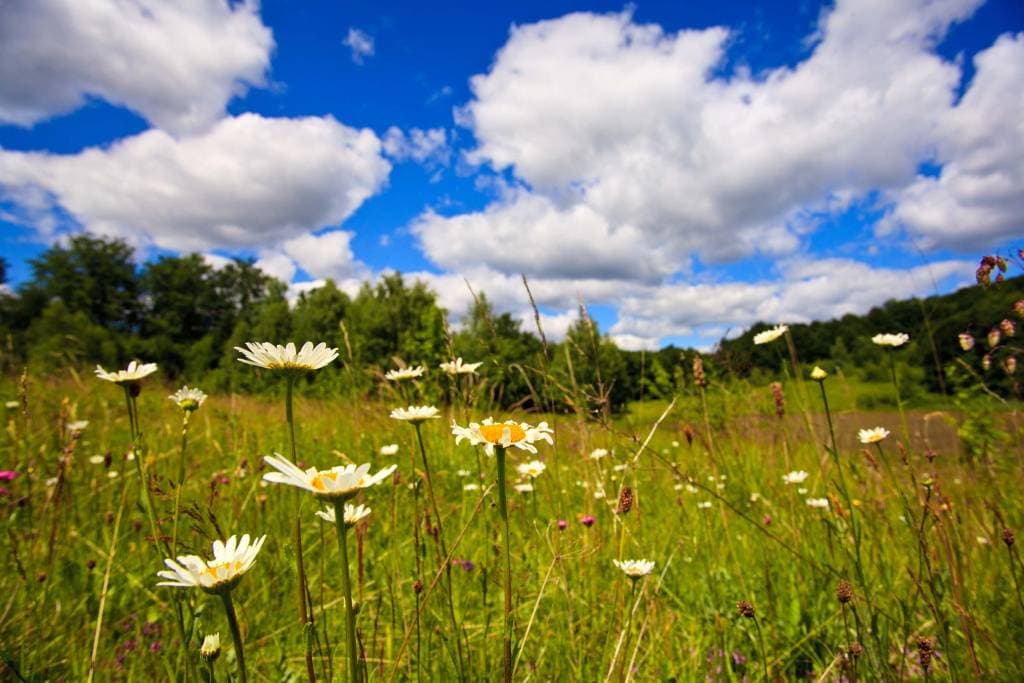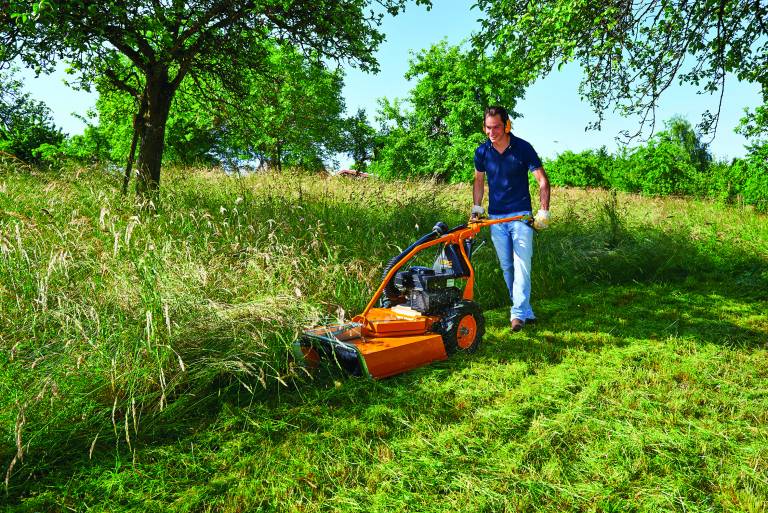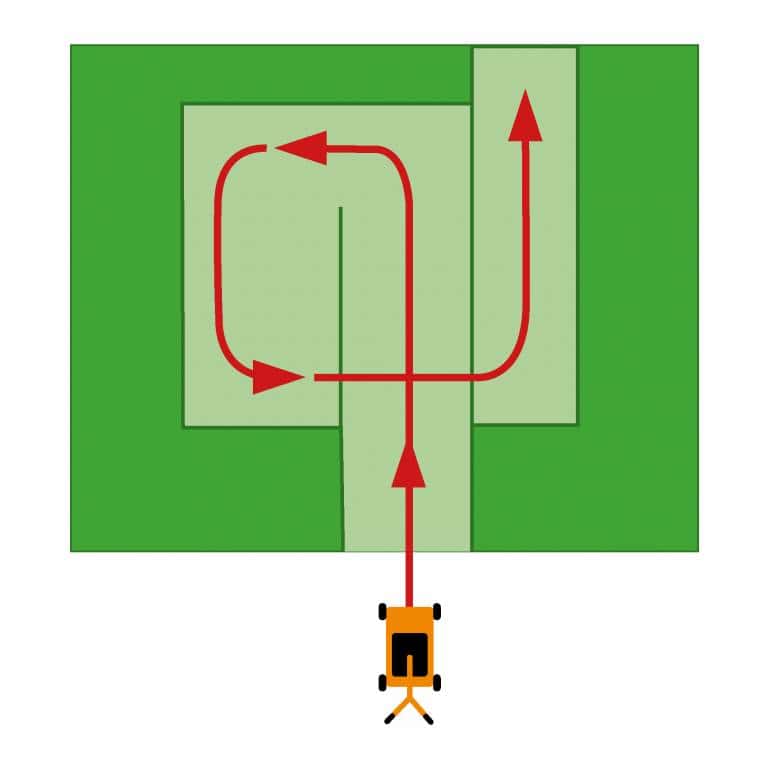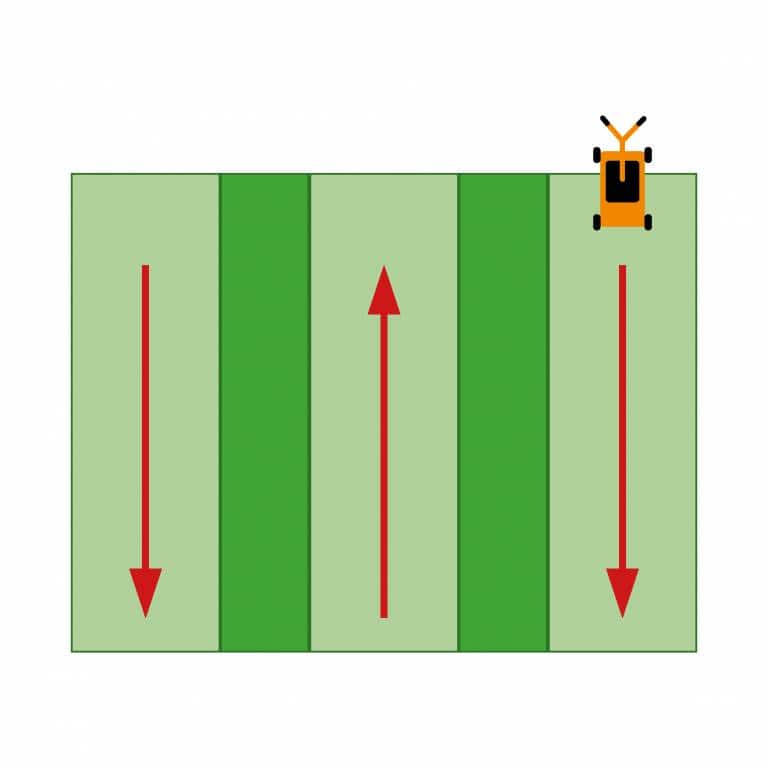How ecological green maintenance succeeds

In times of increasingly intensive land use and the associated extinction of species, extensively used areas such as orchard meadows, slopes, ditches, roadsides, dry grassland or roadside greenery are an important habitat and refuge for a large number of animal and plant species. In order to take proper care of these areas from an ecological point of view, there are a number of things to consider.
Not mowing is no solution either
Nature conservation faces a dilemma when it comes to mowing. Extensive mowing is essential to keep the areas open and to ensure a diverse flora and thus an important habitat for a rich fauna. But at the same time, animals and insects are both injured and suddenly robbed of their habitat. But what to do if neither mowing nor non-mowing is the right thing to do? At AS-Motor, this conflict is well known. After all, the high-grass mower manufacturer offers the right mowers for precisely these demanding areas of application, which are characterised by slopes, bushes, high grass and impassable terrain. The experts from ASMotor therefore recommend that the mowing of extensive areas should be geared to ecological contexts and nature conservation objectives. Always with the goal of preserving and at best increasing the diversity of species.
Maintenance frequency and maintenance period are decisive when mowing
Above all, the frequency of care and the care period have a decisive influence on which animal and plant species settle permanently on an area. Unfortunately, there is no ideal maintenance period for all species at the same time. Therefore, any maintenance planning must take into account which species should be protected and promoted. In order to keep the effects of mowing on flora and fauna as low as possible, as little intervention in the area as possible, but as much as necessary, should be carried out. No maintenance measures are not an option, as this would cause some important plants to lose their habitat. In order to avoid scrub encroachment, at least one or two cuts are necessary on Central European meadows. The exception here are a few nutrient-poor meadows, in for which it is sufficient to mow every two or three years. To outsource a nutrient-rich site, two to three cuts and the collection of the cuttings are necessary first.
With regard to the maintenance period, it is important to pay more attention to the objective of which species are the focus of the promotion. The following points should be taken into account:
- The first mowing must be completed before the start of the growing season, i.e. by mid-March, so as not to disturb ground-nesting birds.
- Areas rich in flowers should only be mowed when the majority of the plants, but at least 50 percent, have faded and the seeds have already been sown.
- If insect numbers are high, mowing should be carried out in the early morning or late evening hours, when the nectar-seeking insects are not yet there or have already retreated. Insects are also less active on cooler or windy days and when the sky is overcast.
- To protect birds and wildlife, the first cut should be postponed until mid-July if possible.
- The best way to protect wildlife is to aggravate the evening before by running off the areas and placing scent marks.
- Delayed mowing towards summer is positive for plants, insects and spiders.
- A very late mowing in autumn is perfect for birds, mammals, amphibians and reptiles. It should be noted, however, that very late mowing may have a negative effect on plant biodiversity.
- Mowing outside the growing season is not recommended, as the cuttings will not be moved and the animals will be disturbed in their hibernation.
Mowing in the right direction
The mowing direction is essential to protect animals and insects during mowing. The ASMotor experts recommend mowing from the centre of the surface towards the outside (Figure 1). The animals in the area are thus pushed to the edge and can flee in the protection of the vegetation. The same applies to mowing in strips (see Figure 2). To protect animals on the ground or falling insects, a cutting height of at least eight centimetres must always be maintained.
Do not mow everything at once
In order not to destroy valuable living and retreating spaces, large-scale and simultaneous mowing must be avoided. Instead, un-mowed areas should be preserved as evasion and escape areas for animals. In addition, sub-populations of the flora can continue to develop undisturbed and then repopulate the mown areas. These so-called old grass strips should ideally measure 10 x 50 metres and should not be mowed until the following year. Depending on the possibility and the protection goal, ten to 20 percent of the area should be left unmown. The principle of moving and rotating fallow strips is recommended when mowing areas section by section (Figure 3). If, on the other hand, the entire area is to or must be mown within two weeks, so-called strip or mosaic mowing (Figure 4) is recommended.
In conclusion, the above recommendations are relatively easy to implement for ecologically oriented landscape management and should ideally become the standard. Although there is no protective care for all animals, there are many small improvements that can be made if the principles listed are observed, and these improvements can significantly improve the survival of populations.


